Panj Takht
Panj Takht
Panj Takht | Akal Takht Sahib | Takht Sri Keshgarh Sahib | Takht Sri Damdama Sahib | Takht Sri Patna Sahib | Hazur Sahib Nanded
Panj Takht
Panj Takht (ਤਖ਼ਤ), which literally means a throne or seat of authority, is a result of the historical growth of the religion of Sikhism. There are five Takhts and these Takhts are the five gurudwaras which have a very special significance for the Sikh community. The first and the most important one was established by Guru Hargobind in 1609. It is called ‘Akal Takht’ (the Throne of the Timeless God) and is situated just opposite the gate of Harmandir Sahib – The Golden Temple, Amritsar. While the Harmandir Sahib, or Golden Temple, represents Sikh spiritual guidance, the Akal Takht symbolizes the dispensing of justice and temporal activity. It is the highest seat of temporal authority of the Khalsa and the seat of the Sikh religion’s earthly authority. Here the Guru held his court and decided matters of military strategy and political policy.
Panj Takht
Later on, the Sikh Nation (Sarbat Khalsa) took decisions here on matters of peace and war and settled disputes between the various Sikh groups. The Sarangi singers sung the ballads of the Sikh Gurus and warriors at this place and robes of honour (saropas) were awarded to persons who rendered distinguished services of the community of men in general. From December 2010, The Deccan Odyssey train, taken on charter from Government of Maharashtra started with aim to have a journey across four Sikh takhts, with a flight by devout and sightseers to the fifth takht (Takht Sri Patna Sahib). A special train named Panj Takht Special train for the pilgrimage of five Sikh takhts, was flagged off on 16 February 2014.
Akal Takht Sahib, Amritsar
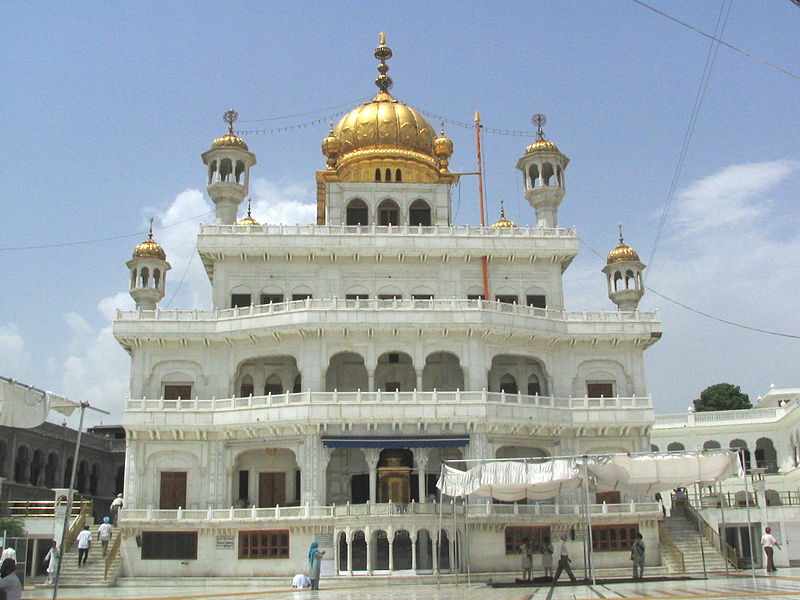
Akal Takhat Sahib means Eternal Throne. It is also part of the Golden Temple complex in Amritsar. Its foundation was laid by Guru Hargobind Ji, the sixth Sikh Guru. The Akal Takhat is situated opposite to Harmandir Sahib and are connected by a passage.
Panj Takht
Read More
Takht Sri Keshgarh Sahib
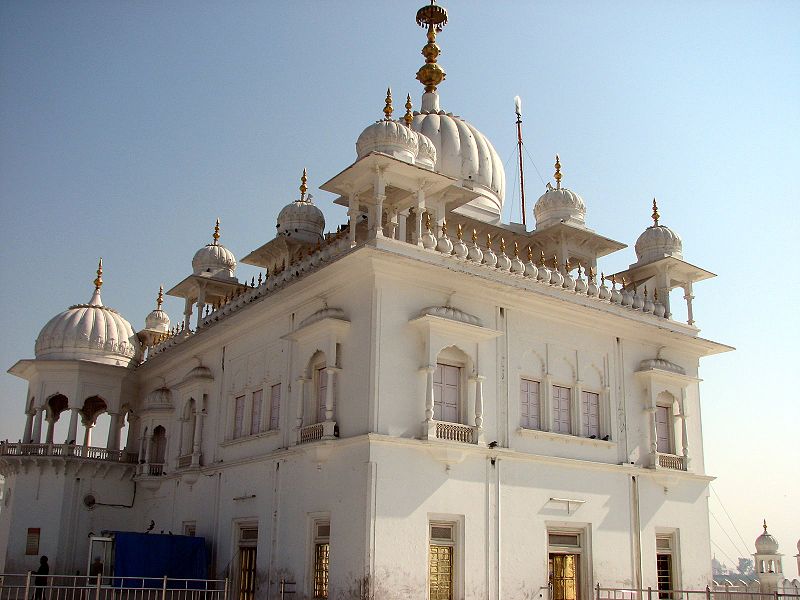
Takht Sri Keshgarh Sahib is situated at Anandpur Sahib. It is the birthplace of the Khalsa. The order of the Khalsa was founded here by Guru Gobind Singh ji in 1699. Some of the weapons of Guru Gobind Singh ji are displayed here.
Takht Sri Damdama Sahib
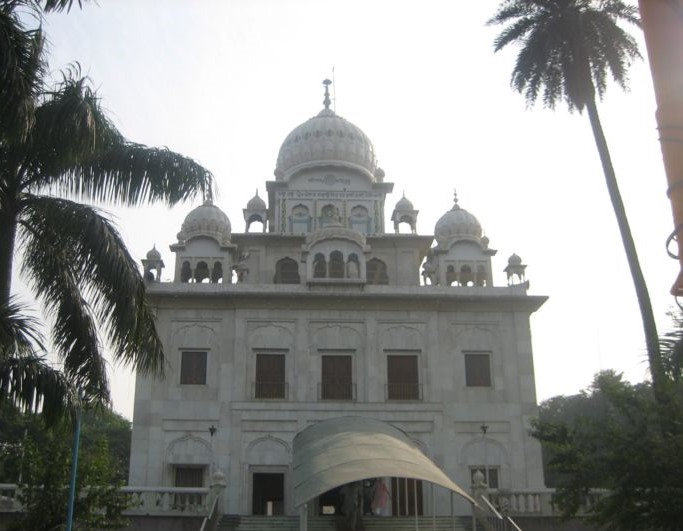
Takht Sri Damdama Sahib (Talwandi Sabo) is situated in the village of Talwandi Sabo near Bhatinda. Guru Gobind Singh Ji stayed here for about a year and compiled the final edition of Guru Granth Sahib Ji also known as the Damdama Sahib Bir in 1705.
Takht Sri Patna Sahib
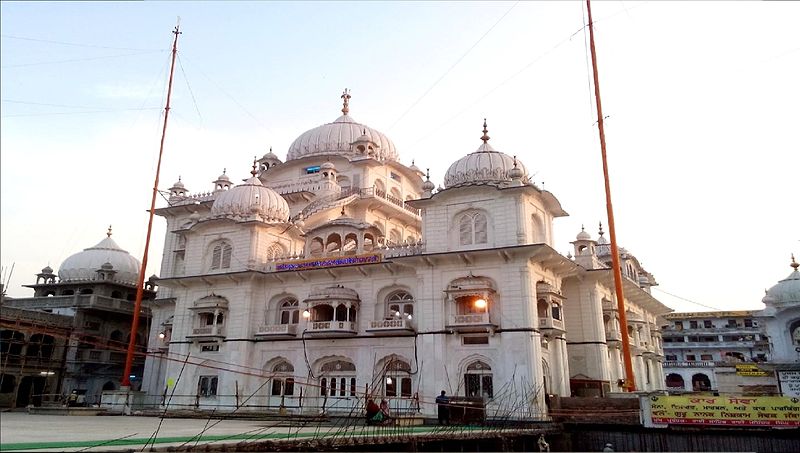
Takht Sri Patna Sahib is situated in Patna city which is also the capital of Bihar state. Guru Gobind Singh Ji was born here in 1666 and He spent his early childhood here before moving to Anandpur Sahib. Besides being the birthplace of Guru Gobind Singh Ji, Patna was also visited by Guru Nanak Dev Sahib Ji and Guru Tegh Bahadur Sahib Ji at different points of time. Here also stayed Guru Gobind Singh Ji’s mother who is Mata Gujri Ji. In the house of salis rai jaohri.
Takht Sri Hazur Sahib
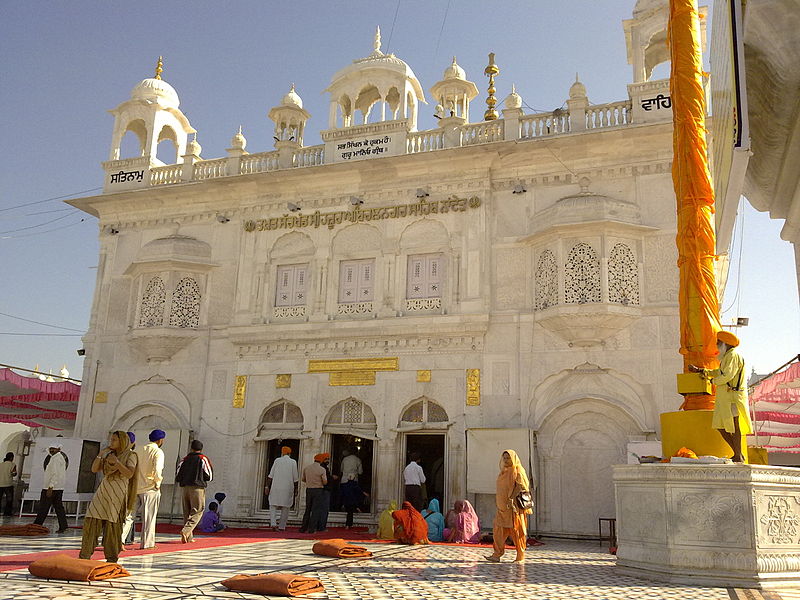
Nanded is one of the historical places in Marathwada region of Maharashtra State. It is situated on the north bank of Godavari River, in the southeastern part of Maharashtra, bordering Telangana. It is famous for Sikh Gurudwaras. Nanded is a town of great antiquity.In 1708, Guru Gobind Singh Ji the tenth spiritual leader of the Sikhs came over to Nanded, His permanent abode.
Panj Takht
Read More